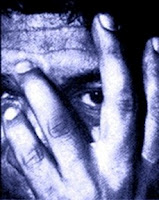Anthropologists who work with shamans and healers in indigenous cultures continue to be influenced by two significant cultural events — the impact of postmodernism on ethnography, and the brief apotheosis of Carlos Castaneda. These events challenged both prongs of the traditional anthropological concept of participant observation: postmodernism questioned what the fieldworker was observing, and Castaneda questioned whether the fieldworker was participating.
Postmodernism in fieldwork advocates a profound distrust of grand narrative, a skepticism about claims of objectivity, and a focus on the presuppositions and biases that underlie research reports. Postmodernism suspects that any truth claim is really masking and serving particular interests in local, cultural, and political struggle. If postmodernism is right that cutural reality is constructed, then the fieldworker, not the subjects of the fieldwork, becomes the bearer of the fieldwork narrative, yielding what anthropologist John Van Maanen calls confessional tales. Native points of view, he says, are not “plums hanging from trees, needing only to be plucked by fieldworkers and passed on to consumers.” Rather, the constructs of fieldwork “emerge from a hermeneutic process: fieldwork is an interpretive act, not an observational or descriptive one.”
At its best, such postmodernist fieldwork promotes self-critical awareness, sensitivity to presuppositions, and continuous dialogue between the interpreter and interpreted. But it can also produce obsessively self-referential and self-congratulatory narratives, which assume that the fieldworker is much more interesting than the people being studied — what I have come to call, in the context of ayahuasca studies, the I-become-a-jaguar school of anthropology.
 |
| This may or may not be a photograph of the reclusive Carlos Castaneda. |
This is where Carlos Castaneda comes in. His first three works in particular posed a challenge to objectivist fieldwork, claiming that — especially where the study of human consciousness is involved — to be a participant observer requires the alteration of one’s own consciousness, notably through the ingestion of culture-specific psychoactive substances; one could not understand the shamanic worldview without, in some largely unstated way, becoming a shaman. To this methodological end, Castaneda offered the first purportedly ethnographic account of his own spiritual experiences with Yaqui sorcerer don Juan Matus.
Castaneda’s general approach has continued in a body of ethnographic writing involving personal narratives of spiritual experiences. The expanded sense of participation includes, specifically, a willingness to participate in rituals and ingest substances designed to induce extraordinary experiences of the sort valorized by the culture in which one is participating. Anthropologists become apprentices to shamans and sorcerers, have significant and prophetic dreams, experience trance states and visions, see spirit matter and animated corpses, become bewitched and possessed — all as part of their fieldwork.
There are three things that are striking about these experiences. First, they have a quality of reality about them; they are experienced as autonomous, external, unmediated, real. The anthropologist is not making them up.
Second, these extraordinary experiences are frequently life-changing, paradigm-shifting. Jeanne Favret-Saada, who studied the role of witchcraft in Bocage culture, says that to understand unwitching “there is no other solution than to practice it oneself, to become one’s own informant, to penetrate one’s own amnesia, and to try and make explicit what one finds unstateable in oneself.” Paul Stoller studied witchcraft among the Songhay of Niger and found that “all my assumptions about the world were uprooted from their foundation in the plain of Western metaphysics.”
Third, and strikingly, anthropologists who have extraordinary experiences describe their experiences in ways that, they claim, are consistent with the expectations of the host culture. The extraordinary spiritual experiences of the anthropologist are held to be — in some sense of the term — the same as those of indigenous practitioners.
Traditionally, in anthropology, such experiences were denigrated as going native, and the accusation meant academic doom. There can be no doubt that the denigration was founded on a hierarchic colonial discourse, in which the colonial Other was seen — often contradictorily and inconsistently — as lazy, aggressive, violent, sexually promiscuous, bestial, primitive, innocent, and irrational, and the colonizers feared contamination by absorption into native life and customs. But more, this colonial discourse was permeated by sexuality. Going native meant, above all, transgressive, interracial sex, with its attendant deterioration and degeneracy — the “abominable practices,” the “monstrous passions,” of Kurtz in Joseph Conrad’s Heart of Darkness.
The discourse of anthropology continues to embody the simultaneous lure and threat of the Other, the seductive but enervating world of the native. Indeed, the psychoactive plants and mushrooms of indigenous cultures are perceived to have an almost sexual allure, and have become, to use Anne McClintock’s phrase, “a porno-tropics for the European imagination — a fantastic magic lantern of the mind” onto which Europe projects its forbidden desires and fears.

- Previous Post: The Society for the Anthropology of Consciousness
- Next Post: Courage and Power
- More Articles Related to: Sacred Plants, The Medicine Path


